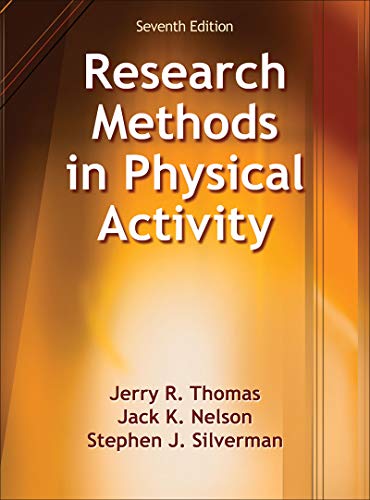Strengh Sensei Bookshelf
Research Methods in Physical Activity

Charles Poliquin always advised his students, “The more you learn, the more you earn!” One source of learning is research papers, but it’s often difficult to determine the credibility of these studies. Research Methods in Physical Activity is a resource written for the general population that can help.
Let’s face it — research papers are often not reader-friendly with their statistical analysis, mathematical formulas, foot-long paragraphs, and often vague conclusions emphasizing the need “for further research on this subject.” Frustrated, many readers do not get past the abstract, drawing their conclusions from this summary. Not a good practice.
Consider the recent popularity of the hip thrust exercise for not just glute development but athletic performance. Coach Poliquin was a big believer in the value of the front squat for improving the start of a sprint. However, one 6-week study found that the hip thrust seemed superior to the front squat in the 10m and 20m sprints. A closer look at how the study was conducted might give you a different opinion.
First, the subjects were not performing full front squats (which Coach Poliquin recommends) but parallel squats. And during the first three weeks of training, the subjects performed between 10-12 reps per set, a muscle-building protocol. Besides not stressing the muscle fibers you want to emphasize for sprinting, it’s challenging to breathe while performing such high reps. The result is that the amount of weight used for such a repetition protocol tends to be relatively light and thus would have less of a strength training effect.
Unless you read and understood the methods section of the study, you may not question the study’s conclusions. Interestingly, an 8-week study involving 21 college-age subjects published in 2019 found that “…the barbell hip thrust does not appear to transfer into improvements in sprint performance in college level athletes.”
Because of his popularity, Poliquin is often referenced in research articles to boost the credibility of the papers. He is OK with that but said he often gets frustrated with poorly researched studies. For example, in one paper on strength training for gymnasts, it was
suggested that Poliquin is a fan of lat pulldowns for gymnasts. Not true. Poliquin has always favored chin-ups and pull-ups for gymnasts and other athletes, not lat pulldowns. Unless the reader did some detective work on the references used in this paper, he or she
could think that pulldowns are a valuable exercise for gymnasts.
Research Methods in Physical Activity by J. Thomas, J. Nelson, and S. Silverman focuses on understanding research in kinesiology, exercise science, sport science, human movement, sport studies, physical education, physical therapy, rehabilitation, and occupational therapy. Whew! It’s reader-friendly and even contains a bit of humor. Its first edition was published in 1985, and its most recent seventh edition has 496 pages. It’s divided into four parts:

Part I: Overview of the Research Process.
Part II: Statistical and Measurement Concepts in Research
Part III: Types of Research
Part IV: Writing the Research Report
Unless you already have a Ph.D. in exercise science, Research Methods in Physical Activity is a must-have resource that teaches you how to understand the research process and interpret the results.
[You can purchase Research Methods in Physical Activity by J. Thomas, J. Nelson, and S. Silverman through humankinetics.com.]
Join the Dojo of Strength for monthly programs, exclusive content from Charles Poliquin, and the latest research in strength training and nutrition.
